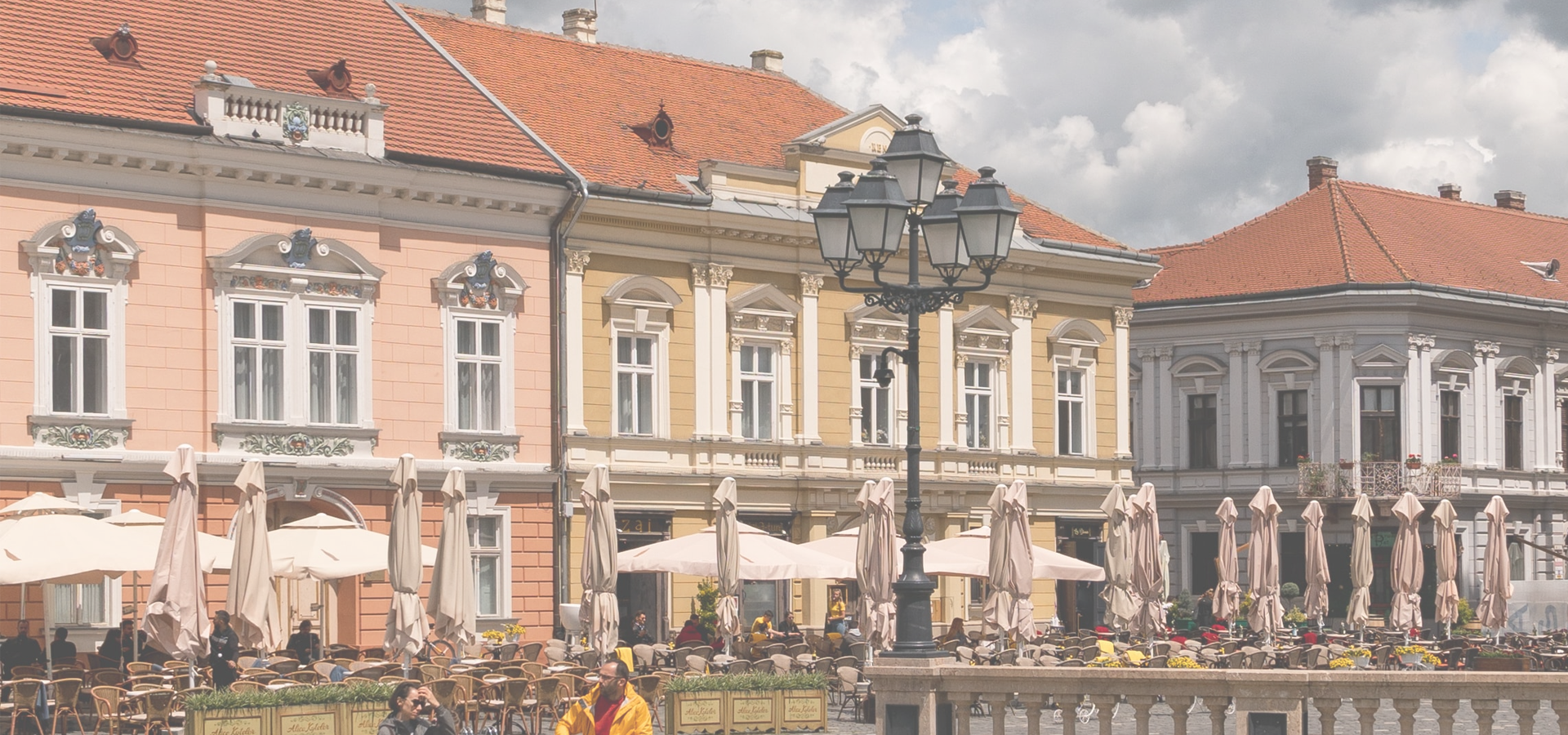Făget, Timiș County, Romania
🇷🇴 Făget is a town in Timiș County, Banat, western Romania. The town is situated in the centre of a distinct ethno-folkloric area, at the north-west side of the Poiana Ruscă mountains, on the DN68 national road. The road stretches from Ilia to Lugoj—and on the CFR 212 railroad line. At the north side of Făget, the Bega river is visible. Around it there are still signs of a medieval fortification dating back to 1548. The town administers ten villages: Bătești (Vadpatak), Begheiu Mic (Bázosd), Bichigi (Kisbékés), Brănești (Avasfalva), Bunea Mare (Bunya), Bunea Mică (depopulated), Colonia Mică (Facsádkistelep), Jupânești (Zsupánfalva), Povârgina (Porzson) and Temerești (Temeres).
Geography Făget is located in the south-west of Romania, in the contact area of the Lugoj Plain with the Lugoj Hills, on the upper course of the Bega River. Within Timiș County, it is located in its eastern part, 98 km from Timișoara and 33 km from Lugoj, to which it is connected by the national road 68A. The same road to the east connects the town with Deva, 68 km away. The town is also crossed by CFR line 212 (Lugoj–Făget–Ilia).
History Făget Fortress is documented for the first time in 1548, as the property of Jakab Békés and bearing the name Fagyath. Between 1594–1602 Făget was the property of the Ban of Lugoj. In 1602 it was besieged and destroyed by the Turks, after which it fell into ruin. For 150 years it has been the subject of fierce confrontations between Romanians, Turks and Austrians, which is also confirmed by archaeological excavations. The picturesque landscape of Făget, the intense spiritual activity and its famous fairs attracted the attention of some foreign travelers who passed through Transylvania and Banat. In 1660, Turkish traveler Evliya Çelebi, passing through Făget, described the medieval fortress: It was built by a woman named Tilen… It is a square-shaped building, beautiful and strong. To the west is a gate facing the plain. It has a dizdar, three hundred chosen soldiers and enough war material; it is entirely covered with shingles, but it has no market and bazaar or anything. It is just a serhat tower.
Along with the military fortress, the civilian settlement also evolved, becoming in a relatively short period of time the most important locality in the area. The fortress was finally demolished by the Turks in 1699. Immediately after Banat was conquered by the Austrians in 1717, Făget had only 20 houses left, but it was the centre of a district with 42 communes. After this period of decline, the town began to grow again and in 1787 received the right to hold eight fairs a year. At the end of the 18th century, Johann Lehmann wrote: Făget is a beautiful country town. The place is rich because of the animal fairs that are held here. The town is Romanian, has over 200 houses and two churches. The inn in Făget is the most beautiful and the cleanest and most spacious on the whole Timișoara–Sibiu line and this inn is the property of Mrs. Soro [the wife of the commander of the Timișoara Fortress]. There are eight guest rooms in the inn. The travelers are well served, but a very expensive price.
On the same note, Italian traveler Domenico Sestini [it] noted that, at the beginning of the 19th century, Făget had "200 Romanian houses with two churches and over 30 German houses with a small but clean church, served by the Minorite monks from Lugoj". Făget was also an important connection point between Banat and Transylvania, here being a "custom house for Transylvania and Hungary".
In the 17th and 18th centuries, attempts were made to colonize workers of other nationalities to work on forest exploitations, but the impact is small and Făget remains a centre of Romanianism at a time when western Banat was intensely colonized. In 1900, attempts were made to settle the first families of Hungarian settlers in Colonia Mică.
On 5 July 1994, Făget was declared a town, with 10 villages subordinated to it.
Economy The economic sector of production is represented by companies active in the field of leather processing in footwear and leather goods, exploitation and processing of wood of various essences, from lumber to furniture, a section for exploitation and processing of quartz sand and companies active in various branches of the food industry, especially milk processing and pastry production. In the village of Jupânești, there is a tradition in pottery, which is declining as an economic activity, but with a high potential.
Timișoara, Romania - Union Square

Făget has a population of over 6,500 people. Făget also forms part of the wider Timiș County which has a population of over 683,540 people. Făget is situated near Timișoara.
Twin Towns, Sister Cities Făget has links with:
🇮🇹 Cervinara, Italy 🇭🇺 Elek, Hungary 🇫🇷 Mirebeau-sur-Bèze, France 🇭🇺 Szekszárd, Hungary🇭🇷 Virovitica 45.833
🇿🇦 Oudtshoorn 22.241
Locations Near: Făget 22.1667,45.85
🇷🇴 Hunedoara 22.921,45.766 d: 59.2
🇷🇴 Timișoara 21.217,45.75 d: 74.5
🇷🇴 Oradea 21.917,47.067 d: 136.6
🇷🇴 Petroșani 23.367,45.4 d: 105.9
🇭🇺 Békéscsaba 21.091,46.679 d: 123.8
Antipodal to: Făget -157.833,-45.85
🇵🇫 Papeete -149.566,-17.537 d: 16775.4
🇹🇴 Nuku'alofa -175.216,-21.136 d: 16844.9
🇦🇸 Pago Pago -170.701,-14.279 d: 16303.4
🇼🇸 Apia -171.76,-13.833 d: 16222.7
🇺🇸 Hilo -155.089,19.725 d: 12718.2
🇺🇸 Maui -156.446,20.72 d: 12611.5
🇺🇸 Maui County -156.617,20.868 d: 12595.4
🇺🇸 Kahului -156.466,20.891 d: 12592.5